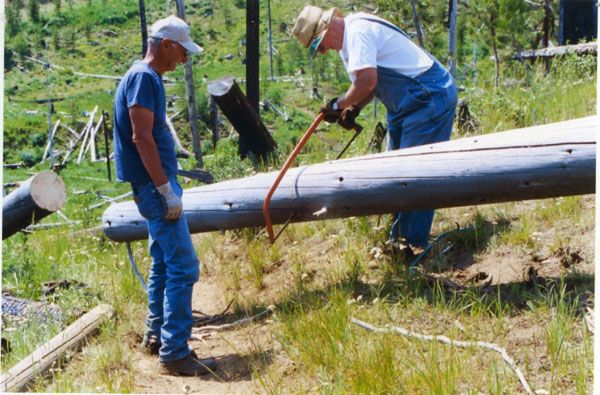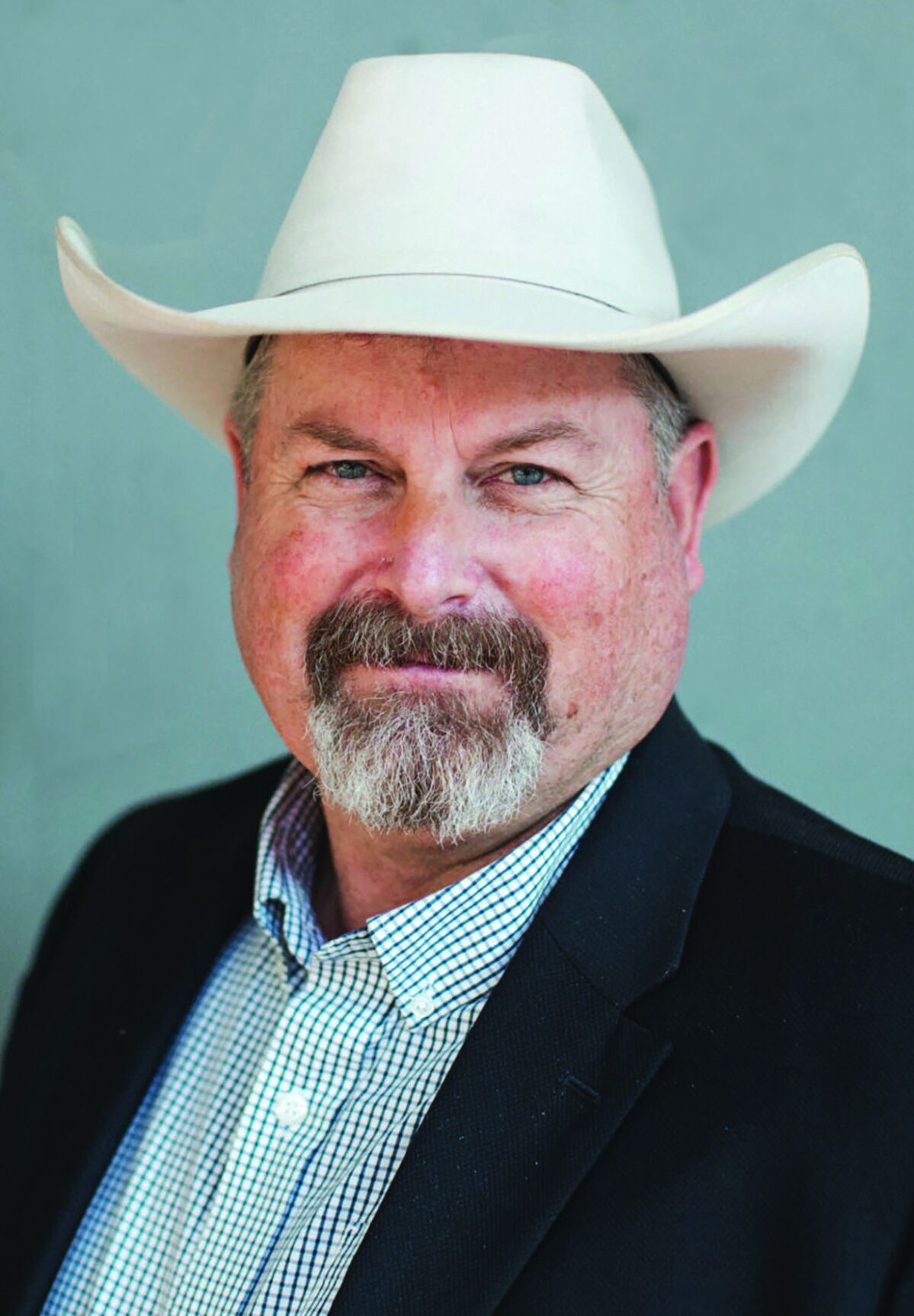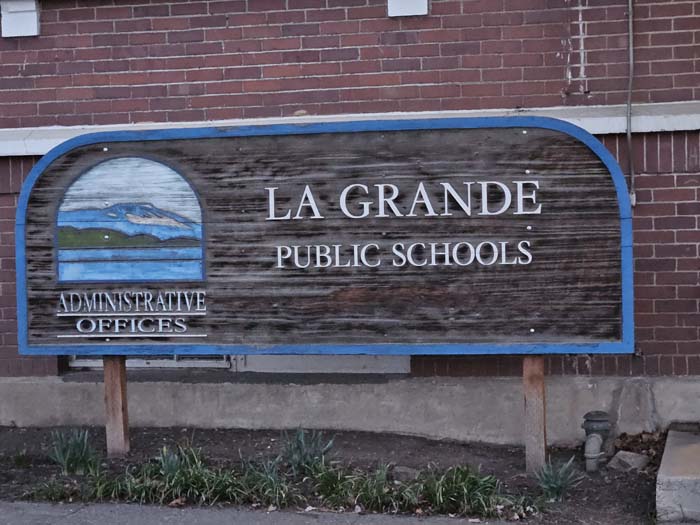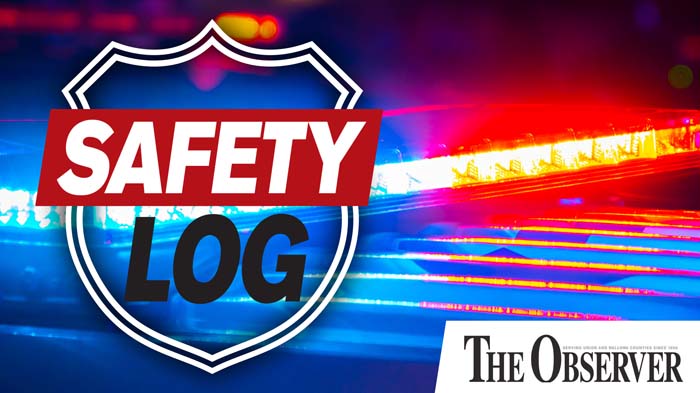Group makes it easier for public to access wild and scenic areas of Wallowa County
Published 4:06 pm Monday, December 8, 2008

- The late Mike Farmer and Dick Seymour clear trails for riders and hikers in the Eagle Cap Wilderness Area. Submitted photo
From the Willamette Valley to the Wallowa Mountains, the Oregon
Trending
Equestrian Trails organization is helping to preserve historical,
culturally sensitive, scenic and wilderness area trails for horse
enthusiasts, hikers, bikers and other users as well.
Trending
The Wallowa Mountains Chapter, with about 22 members, is one of more
than 20 chapters statewide. Began in 1970 in response to “No Horses
Allowed” signs that were appearing in public campgrounds throughout the
state, Oregon Equestrian Trails Inc. has established a tradition that
generates more than 2,400 man-hours of volunteer labor each year. The
organization has played a major role in the building and maintenance of
horse trails and camps in national and state forests, Bureau of Land
Management lands and state parks in Oregon.
According to the Oregon Equestrian Trails Guide, the group’s mission is to “exemplify a responsible, concerned and educated approach to equestrian use of public lands.”
Hoping to counterbalance the efforts of special interest groups to close wilderness trails to horses because of their high impact on trails and camping areas, the OET has worked to change the negative attitude toward horses and riders. In 1971 the Oregon Recreation Trails Advisory Council was formed with no provision for equestrian representation. The OET petitioned the council with more than 4,000 signatures, which resulted in the nomination of Earl Flick, one of the founders of OET, to the advisory council.
Since then the Oregon Equestrian Trails organization has undertaken projects such as the restoration of the Santiam Wagon Road near Sweet Home. Built as a freight route between the Willamette Valley and Central Oregon in 1865, this was one of the most important historical routes in the state. It operated as a toll road until 1915 and was turned over to the state of Oregon to use as a highway in 1925. Highway 20 closely follows the original route of the wagon road. Today, thanks to the efforts of the Central Oregon Chapter of OET, the route is open to hikers and riders.
The Wallowa Mountains Chapter of OET has worked with the U.S. Forest Service, the National Forest Foundation, Cycle Oregon, Oregon State Parks, Wallowa Resources and ODFW to clear and maintain trails to ensure continued public access to many wild and scenic areas in Wallowa County. For two years the group has participated in the clean-up of litter along the Minam and Wallowa Rivers.
According to chapter member Dick Seymour of Wallowa, members ride the Wallowa Union Railroad train down the tracks next to the river and walk back up, filling litter bags. This year the group also pulled noxious weeds in that area.
In September, working with participants of Cycle Oregon, they cleared 17 miles of hiking/biking trails in one day in the McCully Basin, Wallowa Lake and Mount Howard trail systems.
Seymour, field services officer for the Wallowa Mountains Chapter, said the group has recently adopted the Tenderfoot Trail, which starts at Salt Creek Summit, east of Joseph, and ends at the Bonnie Lakes Trailhead. They are replacing a 200-foot bridge that washed out; so far they’ve completed 22 feet.
“This will be an ongoing project for us,” Seymour said. “We are usually working on more than one project at a time. First we have to get permission and that can actually take years. So while that is in the works, we work on the design of a different project. While that is in progress, we can be doing the labor on yet another project.”
Another ongoing project the local chapter is involved with is the marking and clearing of the Nez Perce Historic Trail in Wallowa County. Working with the Nez Perce Trail Foundation, the goal is to help with the development of the trail on the ground. This includes opening the trail for all users and placing respectful interpretation at all historic sites. This year the Wallowa Mountains Chapter cleared and marked seven miles of the trail from Thomason Meadows to Buckhorn. In order to accomplish this, the group gained permission from private landowner Jack McClaran of Enterprise.
“The Nee-Me-Poo Trail gets lost in there from Cow Creek to Lone Pine Saddle on the Snake,” McClaran said “The first marker is at Willow Springs three miles from Cow Creek. Quite a few hikers go in there and pick up the trail there.”
Seymour said the goal is to mark the trail down to Eureka Bar, back up the Imnaha to Cow Creek.
A project that is still in the research stage is the construction of a horse camp at Minam State Park. A horse camp consists of four horse corrals, a loading ramp that doubles as a handicap accessible mount, a rest room and a water source. Seymour said this would be a good place for a horse camp since it is convenient for riders coming into Wallowa County on the highway from La Grande. It is located near the hay station where weed-free hay can be obtained.
State Parks Director Todd Honeywell said there are several hurdles to overcome on this project. Horses are not generally allowed in state parks and a special approval process is necessary to make that possible.
“The Parks Master Plan has already been approved and when anything in the plan is changed significantly we have to go through a public hearing process,” Honeywell said. “The master plan may call for a horse camp over by the hay station and to do that we have to go through the cultural resource process to look for artifacts and things like that.
“It all takes time and funding is always a problem. It is a good idea and this group has been great to work with. They are good at doing the research and that saves me a lot of time. The Oregon Trails statewide organization has experience designing camps in other areas and they work really well.”
According to the chapter’s mission statement, they are pledged to work on community improvement projects that may or may not be equestrian related. In 2007 a chapter work party helped to rebuild the steps and the ramp on the Wallowa County Fairgrounds grandstands. They also helped to build new corrals at the rodeo grounds.
Their crowning achievement, Sally Seymour joked, was the paint job they did on restrooms at the fairgrounds that hadn’t been painted in over 40 years.
The officers of the local chapter of Oregon Equestrian Trails are Susan Gilstrap, president; Donna Ulrich, secretary; Terry Larabee, treasurer. Dick Seymour and Darla Klages are field service officers and are in charge of scouting out and designing projects and setting up work parties.
Sally Seymour said the group is comprised of a good cross-section of people.
“We would like to have more young people involved. This is a good organization for young people looking for public service projects. We are a public service organization that has fun,” she said.
Seymour noted that the local chapter of OET does not teach members how to ride or train their horses. All members are taught “Leave No Trace” camping practices, and trail etiquette is strongly emphasized.
The Oregon Equestrian Trails Etiquette Manual gives extensive recommendations for trail users including following safe riding practices, staying off trails not open to equestrian use and checking railhead rules. Avoiding passing too closely to people because the size of the horse can be intimidating is also stressed.
According to the manual, people with llamas, on foot or on mountain bikes should yield to stock traffic because it is easier and less destructive to the surrounding terrain for them to move off the trail. “If they don’t understand this, smile, ask them to stand below the trail and explain to them why they should wait quietly for your stock to pass,” the manual reads.
Leave No Trace camping information is available at a variety of sources including the Wallowa Visitors Center and online. The principles include planning and adequate preparation; traveling and camping on durable surfaces; using existing trails and campsites; proper disposal of waste; avoiding touching cultural or historic structures and artifacts; minimizing campfire impacts; respecting wildlife; and being considerate of other visitors.
The Wallowa Mountains Chapter of Oregon Equestrian Trails meets once a month at the Lostine Tavern for a no-host dinner and meeting afterwards. On Dec. 8 a new member potluck is planned. For more information, call Tara Baker at 886-3302.









